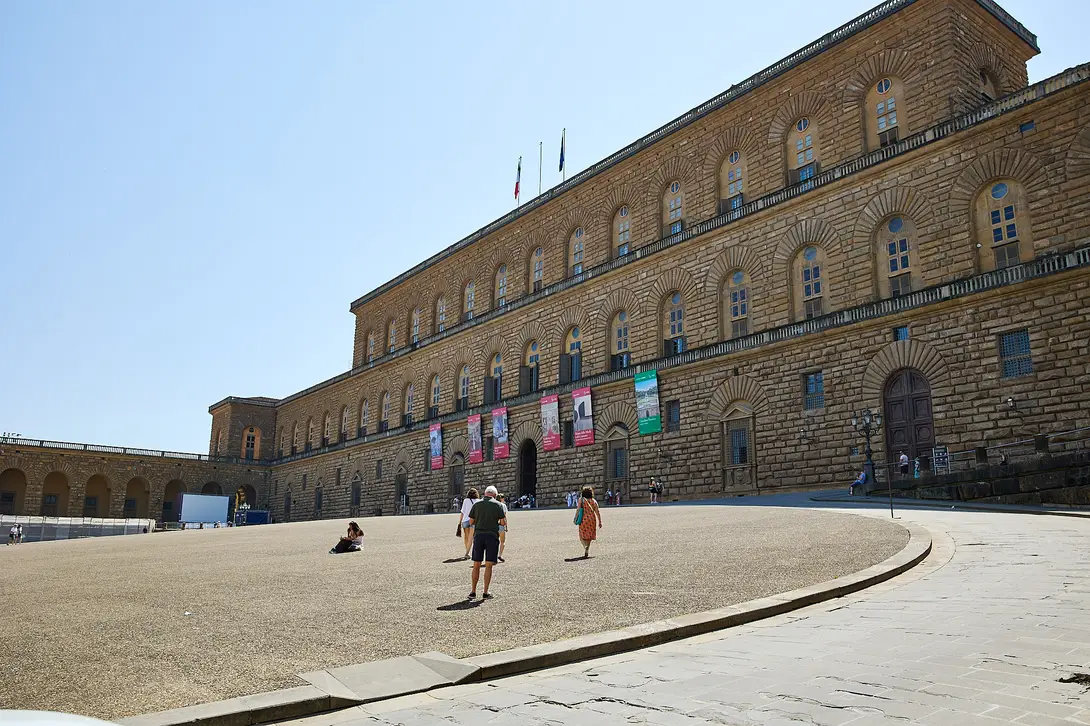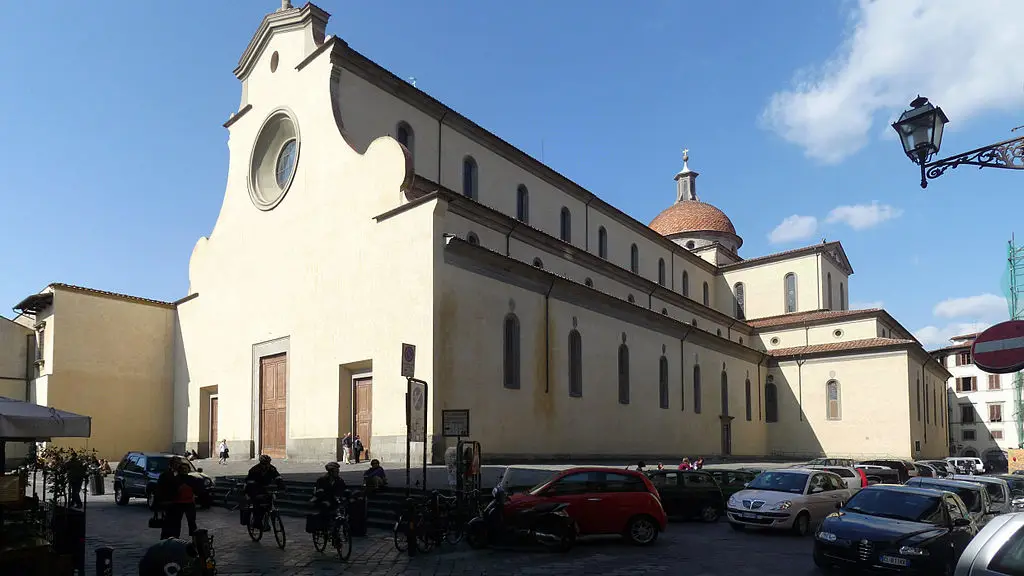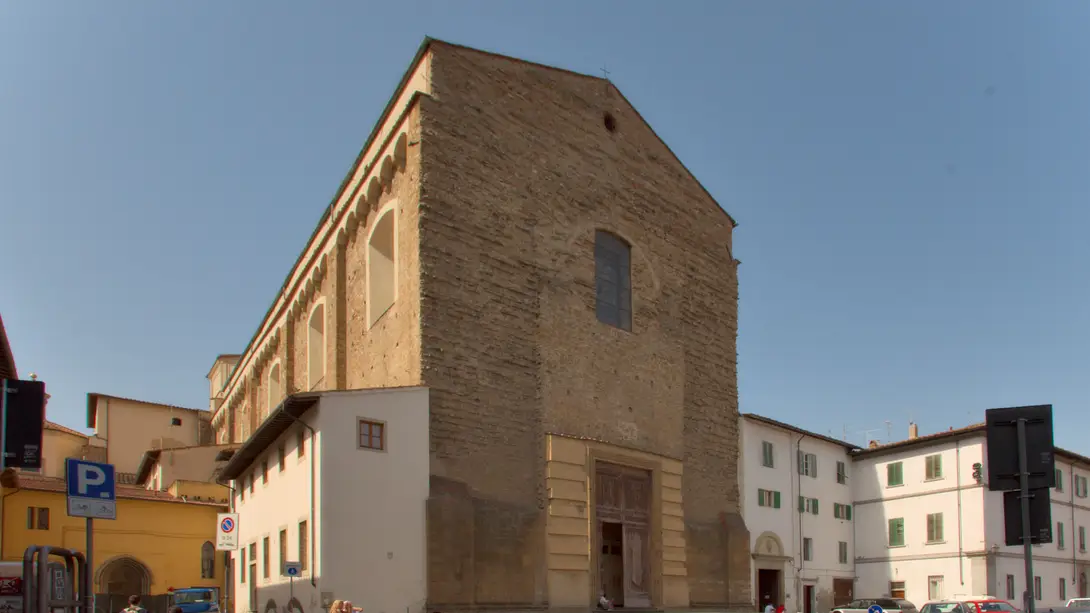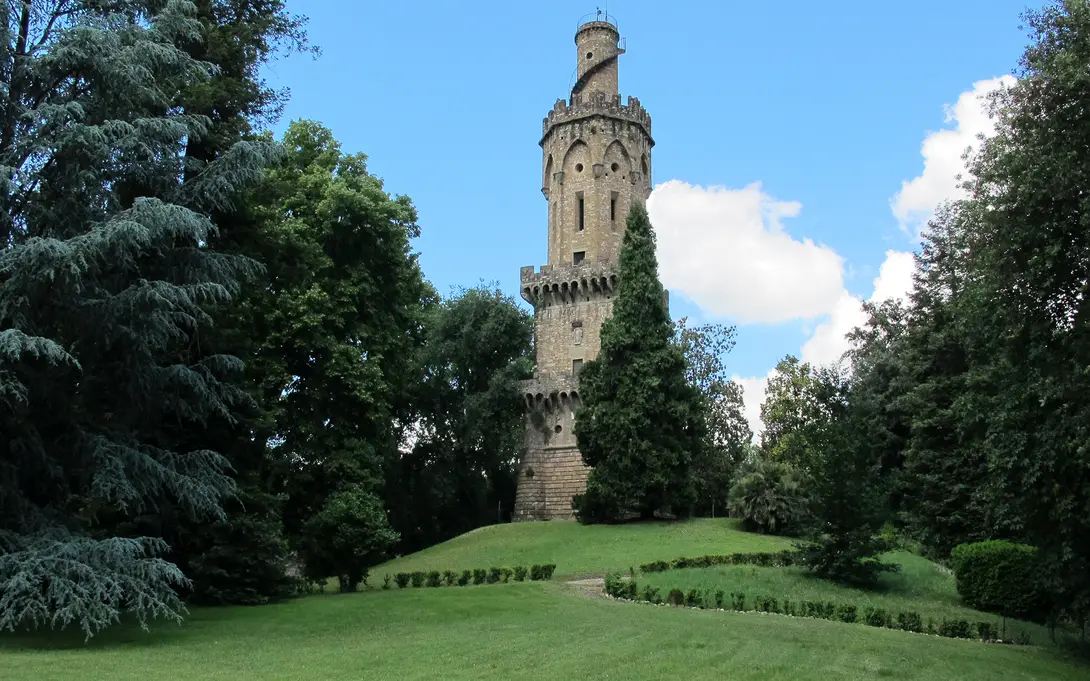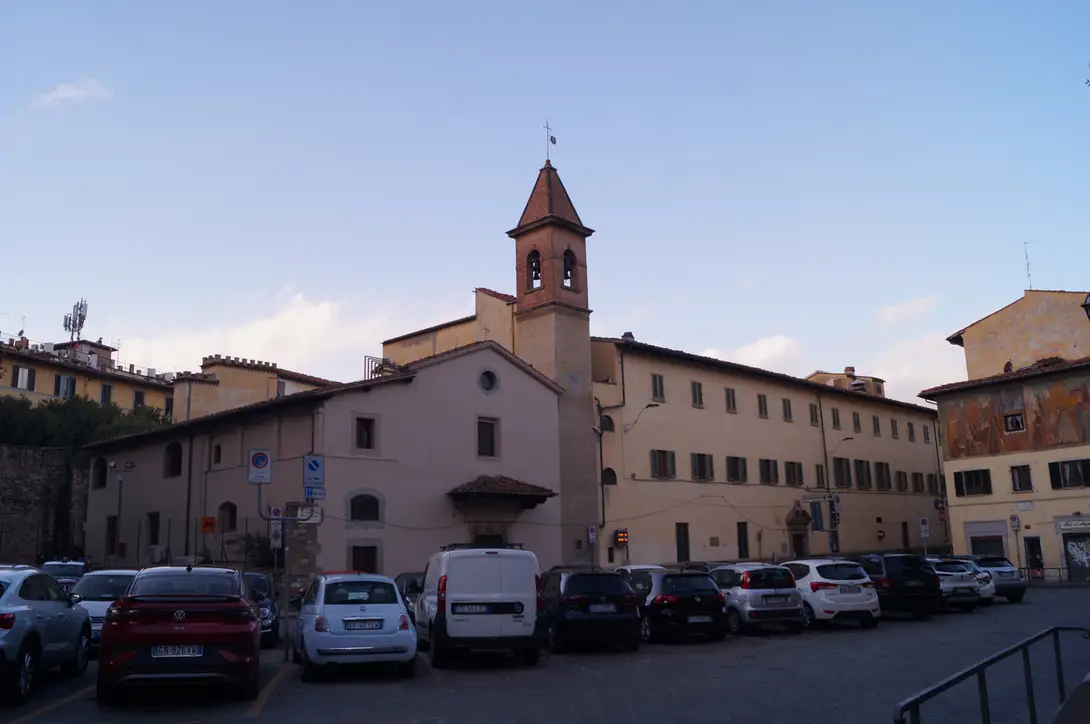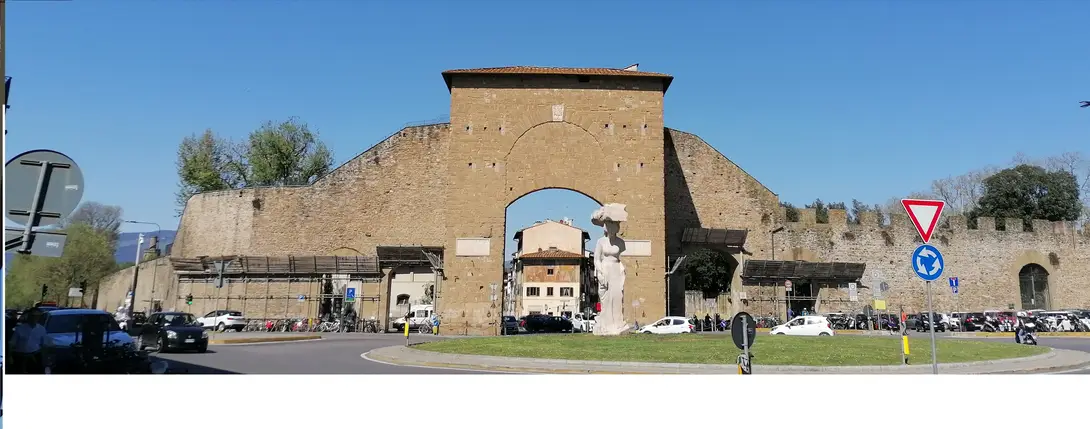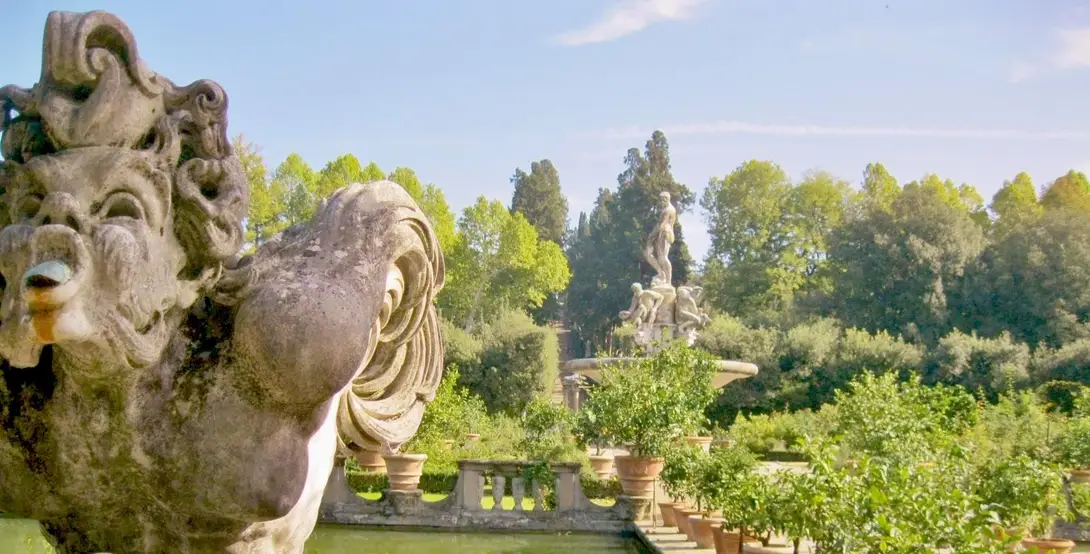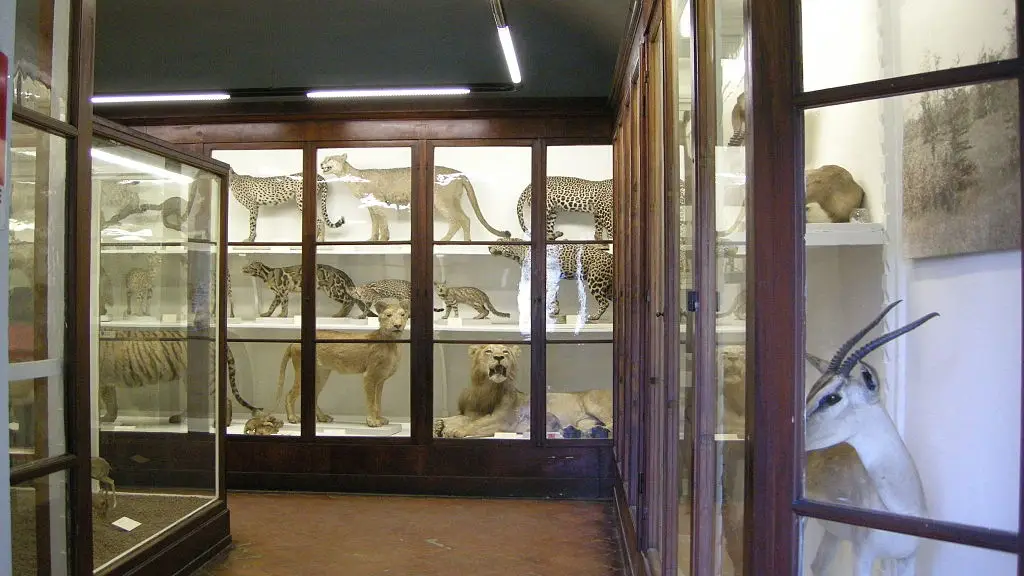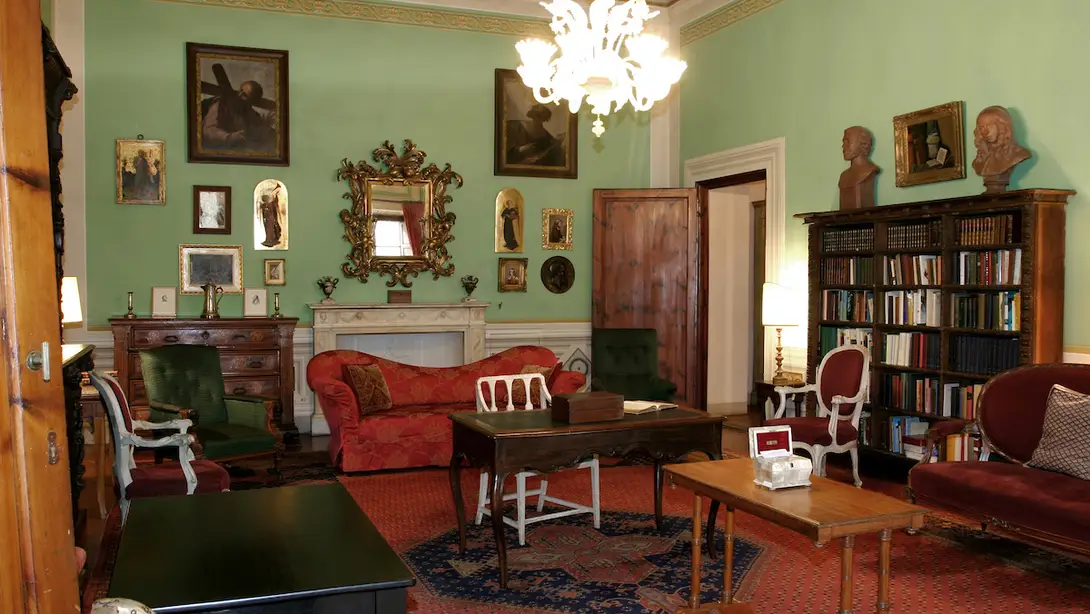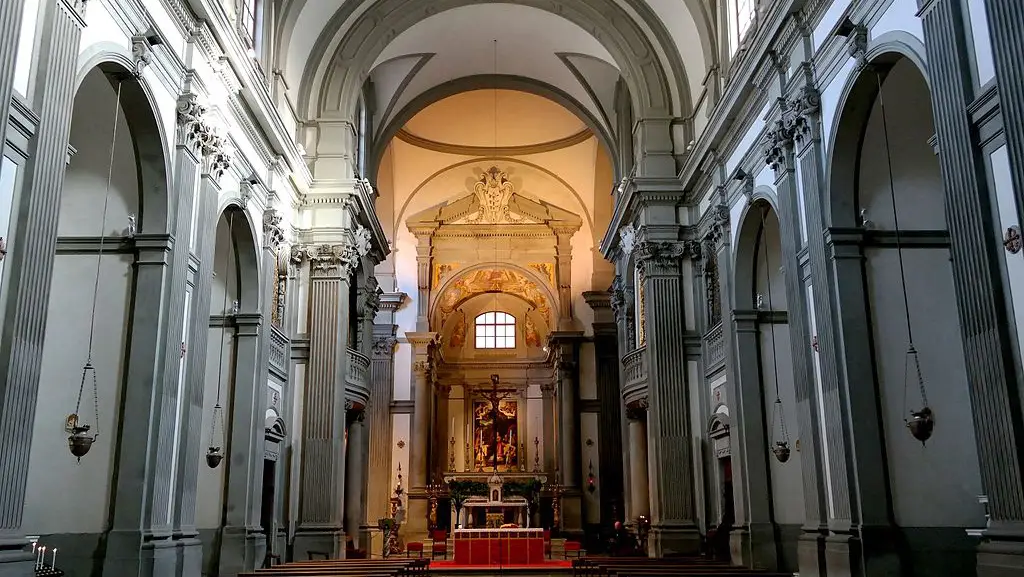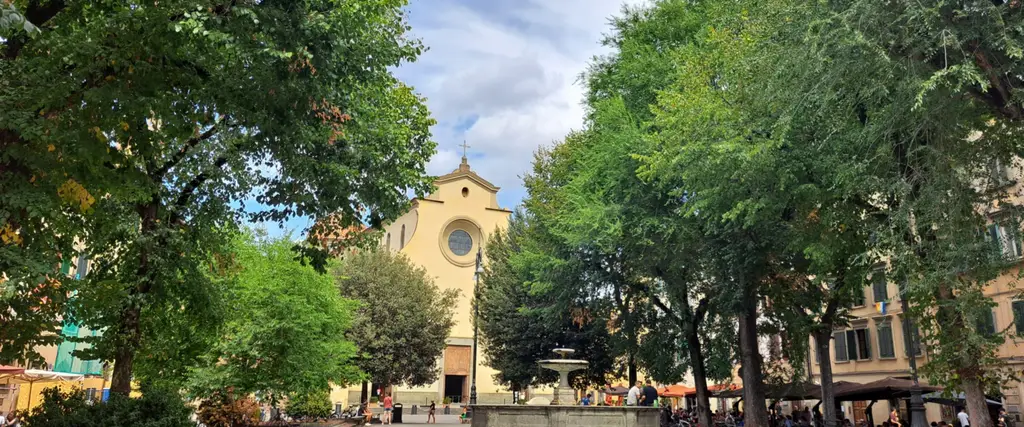
In Oltrarno, between Pitti, Santo Spirito and Porta Romana
This itinerary will take us to discover an area of the Oltrarno (one of the most characteristic of Florence, particularly rich in artisan workshops, touching places of excellence such as Palazzo Pitti, Piazza Santo Spirito, the Church of Carmine and Porta Romana.
As soon as we cross Ponte Vecchio we take Borgo San Jacopo, where numerous tower houses overlook; taking the second alley on the left we reach the picturesque Piazza della Passera from which, across via de' Vellutini, we cross via Maggio (an elegant street full of antique shops); a little further on is Piazza Santo Spirito (with the famous Brunelleschi basilica), the best known of the whole Oltrarno. Then, taking via Sant'Agostino-via Santa Monaca, we arrive at the Church of Carmine, which houses the Brancacci Chapel inside, an absolute masterpiece of the Renaissance with magnificent frescoes by Masaccio.
Following the long Via dei Serragli, overlooked by the Torrigiani garden , we arrive at Piazza della Calza and Porta Romana (part of the city's defensive system). At this point we can return to Ponte Vecchio and the center in two ways. In the first case, crossing the worldwide famous Boboli Gardens (entrance from Piazzale di Porta Romana) and exiting Palazzo Pitti; in the second, taking via Romana where, before reaching Palazzo Pitti, we encounter other places of interest: the famous Museo della Specola (one of the most fascinating sections of the Natural History Museum of the University of Florence), and Casa Guidi, residence of the poet Elizabeth Barrett Browning. Half way between Palazzo Pitti and Ponte Vecchio, you cannot miss the Church of Santa Felicita (inside a masterpiece by Pontormo, mannerist painter).
To complete the discovery of the Oltrarno we also recommend the itinerary dedicated to the San Niccolò district.
Visit Tuscany
Die Orte
Etappen
Piazza Pitti
Piazza de' Pitti, almost completely dominated by the imposing ashlar facade of Palazzo Pitti, is one of the most beautiful squares, recently pedestrianized, in the Oltrarno. The Pitti complex, in addition to the Boboli Gardens, includes 5 museums: the Palatine Gallery, the Gallery of Modern Art, the Treasury of the Grand Dukes, the Museum of Fashion and Costume, the Porcelain Museum.
Built in a secondary area of the city, on the slopes of the Boboli hill, the palace was commissioned by the banker Lucca Pitti (1457); it was then expanded, about a century later, when it was bought by the Medici, becoming the family's most prestigious residence. In 1620 Giulio Parigi enlarged the façade, while in the eighteenth century, the Lorraine family built the two lateral wings that delimit today's slightly uphill square, to further underline the majesty of the complex.
In the square, in addition to Palazzo Pitti, there are other important buildings, including Palazzo Guicciardini and Palazzo Temple Leader. In the square some plaques mark the houses where illustrious people lived: at no. 18 is the home of Paolo dal Pozzo Toscanelli (the astronomer who inspired Christopher Columbus), while at no. 2 the house where Fyodor Dostoevskij worked on his masterpiece, The Idiot. In the immediate vicinity of Piazza Pitti is Casa Guidi, the house-museum where the English poet Elizabeth Barrett Browning lived.
Piazza della Passera
Piazza Santo Spirito
The settlement of the Augustinian Hermits in an area of the Oltrarno (the area beyond the river Arno) included within the city walls of 1173 dates back to 1250 and is of fundamental importance for the entire neighborhood. In fact, during the 13th century, thanks also to the construction of three new bridges, the Oltrarno experienced a notable urban expansion which was organized around the two main religious centres: Santo Spirito and the Carmine churches
Starting from 1269 the Basilica of Santo Spiritowas rebuilt and enlarged with the economic participation of the Municipality and at the end of the century the square took shape. The architectural appearance of this urban space has, however, profoundly changed over time: the reconstruction of the church based on a design by Brunelleschi (who here, inside, reached the pinnacle of his artistic career), the expansion of the convent, the architectural renovation of some noble palaces, but above all the eighteenth-century plastering of the church facade create the face of one of the most characteristic, "popular" and lively squares in the city. Numerous fair-markets are also held here, including (every third Sunday of the month) the Fierucola.
On the left side of the facade there is the entrance to the Cenacolo di Santo Spirito (Salvatore Romano Foundation), a small-great museum.
Chiesa di Santa Maria del Carmine
The church of Santa Maria del Carmine leans imposingly with a rough façade in stone and brick in the homonymous piazza del Carmine.
The church was founded in 1268 and finished in 1476. It houses the worldwide famous Cappella Brancacci, painted with spectacular fescoes, in early Reanaissance style, by Masaccio and his master Masolino (completed by Filippino Lippi). The church was renewed internally, after the dramatic fire in 1771, following a project by Giuseppe Ruggieri. The interior is a Latin cross and characterized by a single nave and five altars on each side, decorated with eighteenth-century style stuccos. In the transept a masterpiece of the Florentine Baroque, the Corsini Chapel. Admirable for the unity of the whole due to the greatest artists operating in Florence in the second half of the seventeenth century (Giovanni Battista Foggini, Luca Giordano).
Torrigiani Garden
It Is the second biggest garden (after Boboli Gardens) inside the city walls and it is a perfect sample of an English-style garden from an aesthetic and philosophical point of view. In 1813 Pietro Torrigiani, Mason, entrusted the development of the garden to Luigi de Cambrai Digny who also belonged to the Masonic lodge "Napoleone".The garden was supposed to have an itinerary in a Masonic-symbolic key, with symbols that had to remain mysterious and hardly decipherable: statues of the Sphinx and Osiris, little Arcadia temple , the small tower and other numerous architectures. Cambrai Digny worked at it for only one year.
In 1819 the architect Gaetano Baccani built the neo-Gothic small tower, the false merlons of the Medici bastion, the gymnasium, the aviary, and other games. Also in 1813 Antonio Pucci published the inventory, that contains the names of 13.000 plants in the soil and 5.500 in pott.
Piazza della Calza
Piazza della Calza is immediately behind the city gate Porta Romana, bordered by the walls of Florence - the still well-preserved section of Viale Petrarca and the perimeter wall of the Boboli Gardens.
Via dei Serragli and Via Romana converge on the square, which is now heavily trafficked. The building that divides the two streets bears a pediment at the top, the work of the artist Mario Romoli, to whom Mayor Piero Bargellini entrusted the decoration, following a public competition, in 1953. The fresco is called Life of Florence and depicts various characters from Florence's past and 20th century who contributed to making the city great
Among the architectural and artistic elements of note is obviously the Porta Romana, founded in 1328 and of imposing dimensions, being the second largest in the entire circle of walls.
On the front of the square is also the Convent della Calza building, which is what gives the place its name. In fact, the hood of the Ingesuati monks, who resided here, was shaped like a stocking (calza in Italian). The complex is very interesting for the presence of a Cenacle frescoed by Franciabigio with scenes from the Last Supper.
Porta Romana
Porta Romana, founded in 1328, is the largest gate in Florence after San Frediano; in ancient times, it allowed people to leave the city in the direction of Siena and Rome.
The central lily, a work by Giovanni Pisano in 1331, is made of marble, while the two side headstones, also in white marble, commemorate the visit of the Medici Pope Leo X in 1515 and the Holy Roman Emperor Charles V in 1536.
Today, there are five openings around the door; in the past it was only the one on the left, the other four were added in 1930 to facilitate the traffic and the access to Boboli Gardens.
Finally, there were originally statues on the outside of the door, but today only those of the Madonna and Child, St. Peter and St. Paul remain, which we can admire today under the steps of the courtyard of the Bargello Museum.
Boboli Gardens
The Medici family was the first to take care of the Boboli garden’s arrangement, creating the model of the Italian-style garden, then an example for many European courts, in which a rational order is given to the vegetation and the geometries of the avenues and plants are embellished with grottoes, statues and fountains.
Opened to the public in 1766, it is a real open-air museum: valuable are the Roman statues and those of Renaissance sculptors such as Baccio Bandinelli and Giambologna; the amphitheatre, where court performances took place; the Grotta del Buontalenti, where Michelangelo's Prisons were placed (now replaced by copies).
Museo di Storia Naturale dell'Università di Firenze - Zoology - La Specola
La Specola Museum, which is part of the Natural History Museum of the University of Florence, is the oldest scientific museum open to the public: it will celebrate its 250th anniversary in 2025!
The Museum's collections are directly descended from the Medici collections, which did not only cover art but also exhibits of naturalistic interest and mirabilia. The Specola takes its name from the astronomical observatory established here by Grand Duke Peter Leopold of Lorraine in the in the observation tower (specola).
Among the museum halls that can be visited by appointment is the Tribuna di Galileo, dating back to 1841, decorated with frescoes and marbles illustrating Italian scientific discoveriesfrom the Renaissance to Alessandro Volta.
The museum is unique because of its collections: an extraordinary zoological collection that offers an almost complete view of existing animals, as well as extinct ones; the anatomical wax halls made in the museum's workshop in the 18th-19th centuries include the works of Gaetano Zumbo and Clemente Susini; and the Hall of Skeletons, an evocative space dedicated to vertebrates large and small. These exhibitions are complemented by two new visit routes - Botanical Waxes and Mineralogy.
A science-themed museum that boasts an extraordinary wealth of interest, both for adults and children, for the zoology section and for the minerals, some of them large, from all over the world. Please, check the museum's website for guided tours and activities for families with children.
Casa Guidi
Robert Browning and Elizabeth Barrett arrived in Florence in 1847, when Elizabeth was already a well-established poetess. They lived in the city for fourteen years until her death in 1861, making friends with many well-known Italians.
Elizabeth came up with the name of ‘Casa Guidi’ to give an idea of a family home, and except for a few more elegant items, the paintings and furniture were bought from second-hand shops. Overall the apartment has retained its former appearance.
Chiesa di Santa Felicita
Santa Felicita is an important church in Florence located in the Oltrarno district a few steps after Ponte Vecchio.
As soon as you enter, on the right (in the Brunelleschi Cappella Capponi), you can admire an absolute masterpiece of Florentine mannerism: the sublime Deposition by Pontormo, to whom the nearby Annunciation (about 1525) is also due. The church also preserves numerous fourteenth-century works. The path of the Vasari Corridor, which "crosses the church", is clearly visible from both inside and outside.
